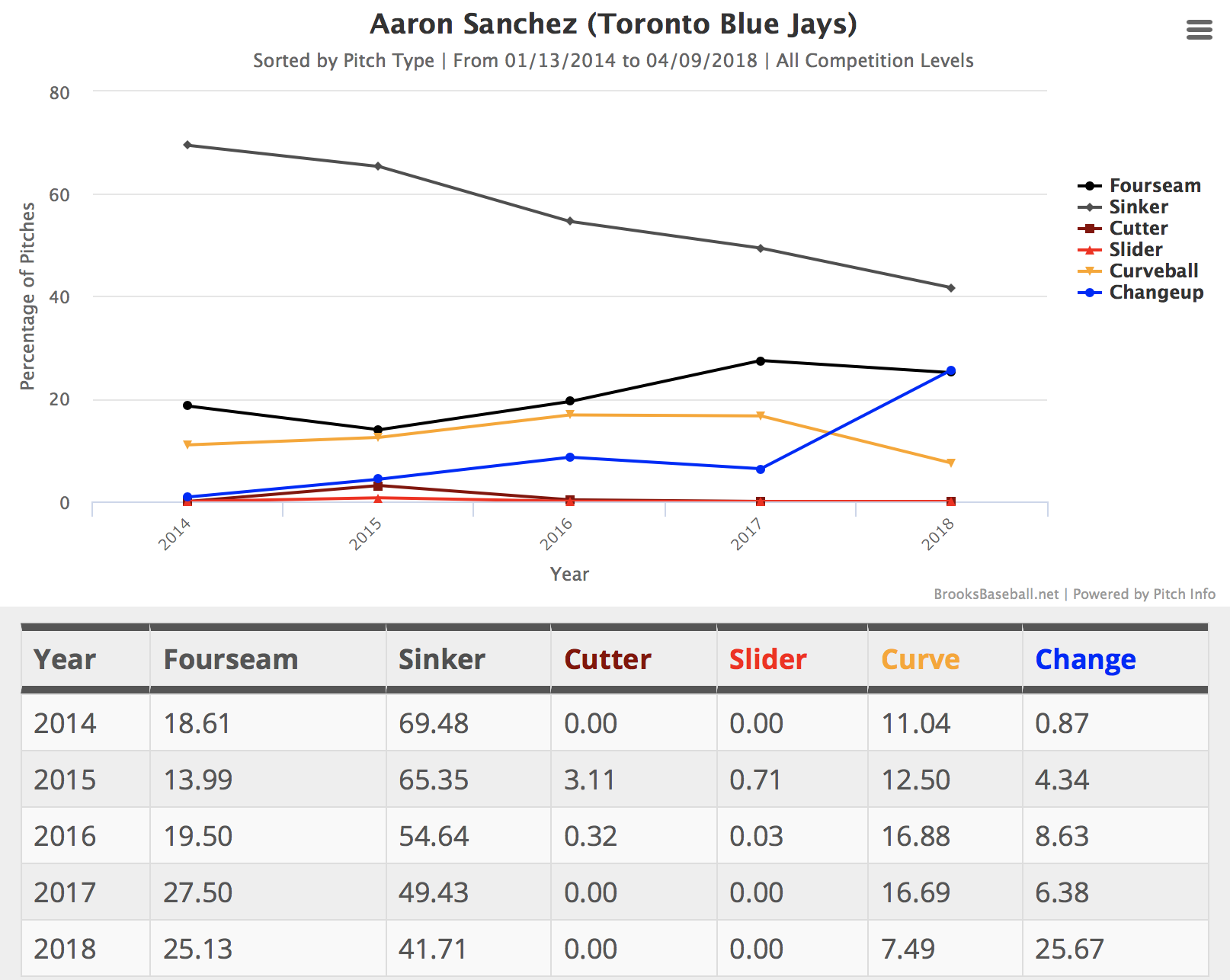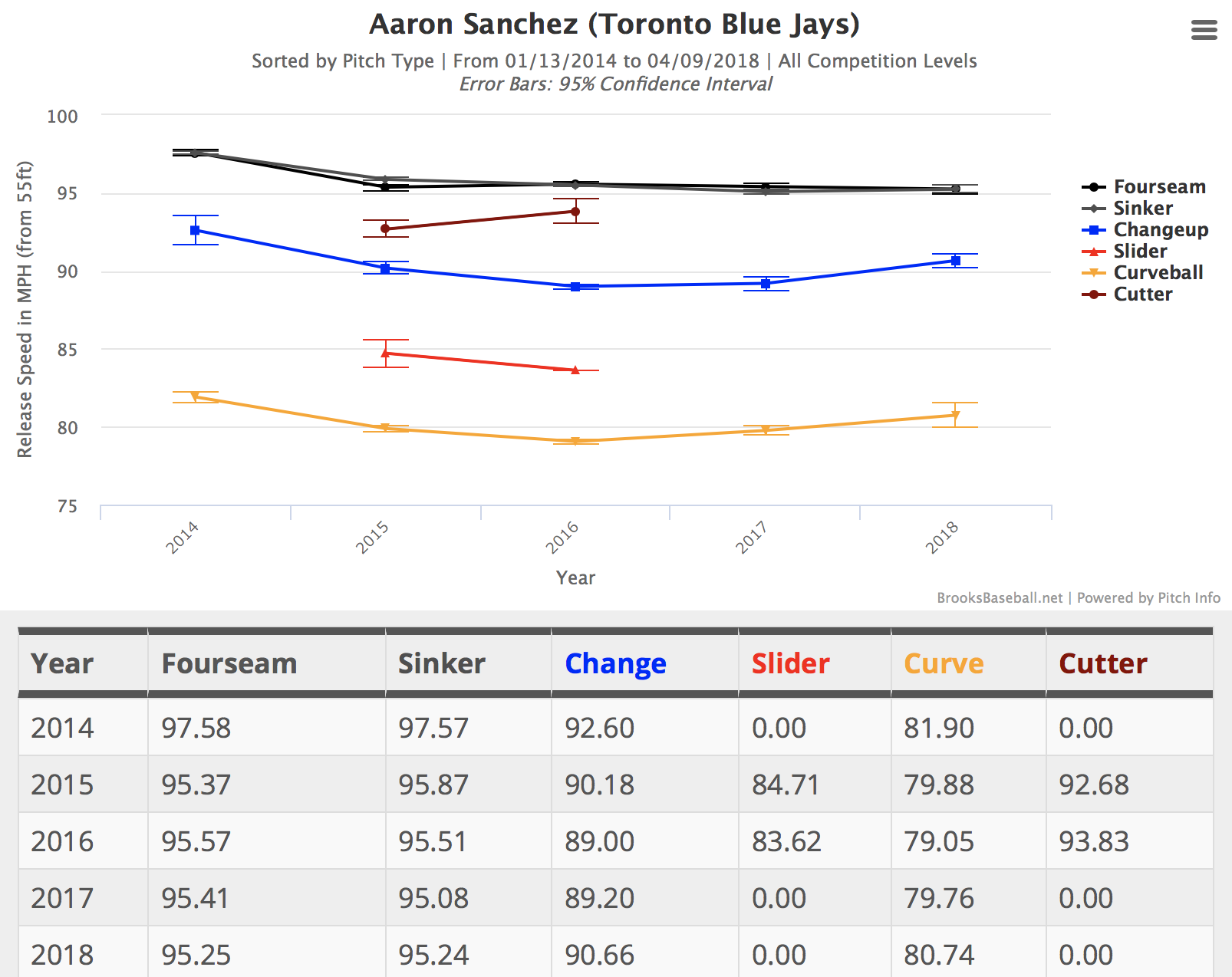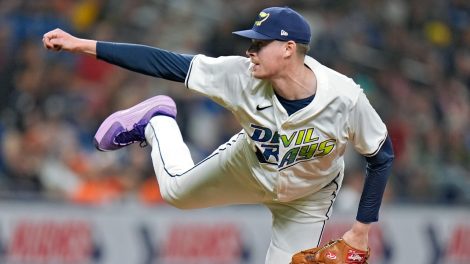BALTIMORE – At the beginning of spring training for the Toronto Blue Jays, John Gibbons pulled Aaron Sanchez aside and made a suggestion. Besides showing that his finger troubles from a year ago were in the past, the manager told the right-hander, he really had nothing to prove in camp. So rather than worry about getting batters out and putting up a pretty stat line, focus on developing the change-up and curveball, the inconsistent secondary offerings difficult to hone in-season.
“Spring training is the perfect time for it,” Gibbons recalls saying to Sanchez. “Experiment with it because if you don’t use it a lot here, you won’t have a good feel for it when the season starts. You might gain some confidence in them. See what the reaction is to it. That’s basically all it was.”
Sanchez took those words to heart and worked on the two pitches as much as he did his bread-and-butter sinker. And over the course of six spring outings, the change-up, his oft-shelved third offering, emerged as a go-to weapon that he’s thrown 48 times in his first two starts of the year, which is nine more than he threw in his 36 innings of work in 2017.
More importantly, those 48 change-ups have generated 13 swings and misses, four groundballs, one fly out and just one hit against. Very quickly, it’s become a reliable tool.

“I give of a lot of credit to Gibby for making me use it in spring training the way I did,” says Sanchez. “He said it’s not just going to come Day 1, you’ve got to throw it, and I spent all of spring training emphasizing it, and also trying to keep all my other stuff up to where I needed to be. I knew [the change-up] was a good pitch even when I used it in previous years. It was just a matter of getting to that pitch because it was so inconsistent. Now that I can command it better, you’re seeing a lot more of them because it’s one of those pitches I feel equalizes hitters up there.”
Even with his mid-90s velocity back with his groundball-inducing sink, Sanchez still needs a reliable complement. The curveball was long the secondary offering he prioritized in recent years, but it was sometimes brilliant and sometimes not. And while Sanchez gets roughly a 15 m.p.h. differential in velocity between the sinker and curveball, the breaking ball sometimes left his hand with a bit of a loop.
With the change-up, everything looks the same but the pitch itself does vastly different things.
“He needs to control bat speed. That’s where it comes into play,” says pitching coach Pete Walker. “He’s really throwing it just like his sinker, with arm speed and feel coming off his fingertips. The curve has bigger break, sometimes it pops out of his hand, so we’re trying to shorten up that breaking ball a little bit, but for him, controlling bat speed, being able to get away with a little bit more with the fastball at times is really important.”

Typically pitchers look to throw change-ups roughly 10 m.p.h. slower than fastballs but so far Sanchez’s change-up is at 90.66 m.p.h., roughly five m.p.h. slower than his two-seamer. Sometimes, that can be a warning sign of danger with the change, but Sanchez is getting so much movement with the pitch, it doesn’t really matter.
“I really put in the category of a Felix Hernandez, who can sink the hell out of the ball and has a lot of success with it,” says Walker. “That’s really the kind of shape it has and the kind of success it has so far.”
The change-up can be difficult to master for power arms, particularly since it’s such a feel offering thrown differently by virtually everyone with one. The universal key is in maintaining the same arm speed in order to sell the pitch.
Sanchez, 26, spoke with both Walker and change-up expert Marco Estrada about how to best sell the pitch, and he uses something akin to a circle change grip to deaden the ball.
“I’ve always done it like that. I like to feel the thumb, the thumb for me is what helps me command the pitch,” says Sanchez. “I’m just trying to make it look like my heater and fall off the table a little bit more, and just be a little bit slower. The grip is going to determine all that. It’s just a matter of making it look like a fastball and I feel like I’ve done a really good job of keeping the same arm speed, keeping the same delivery.”
[snippet id=3966765]
The next step for Sanchez is to gain more consistency with his curveball and incorporate that more heavily into his mix but it’s also worth remembering that he essentially missed all of last season, and it takes time to fully regain feel on the mound.
Catch, towel drills, side sessions and even spring games are great ways to stay sharp, but there’s no simulating a big-league start with real stakes in front of, usually, big crowds. Most of the damage against him so far this season has come against his fastball, but as he gets sharper with that, maintaining his change and locking down the curveball will only make him tougher.
“I don’t care how hard you throw, if they can narrow you down to one pitch, they’re going to get you sooner or later,” says Gibbons. “You think about his development, he’s just a young kid starting out his career, he’s got that sinking fastball and he can pitch a lot with just that.
“But you add more to it and it might take him to a way different level.”
[relatedlinks]









